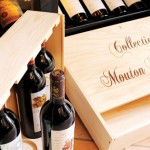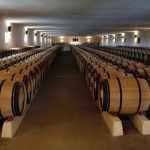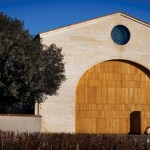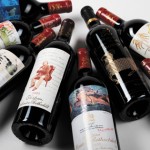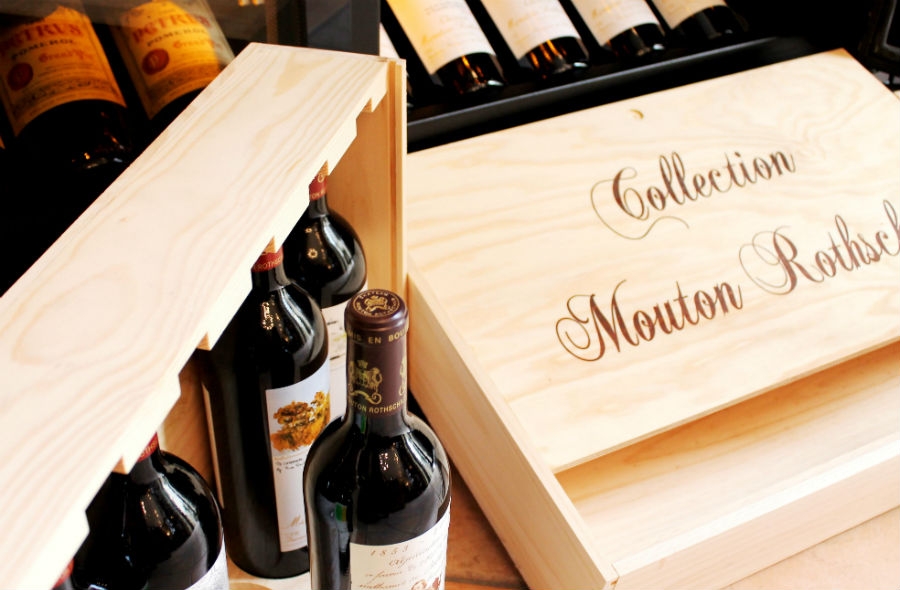
Every year I travel to the region of Bordeaux in France to visit some of the most recognized and legendary wine estates in the world.
This year, I was invited by “Le Conseil des Grands Crus Classes” to discover some of the five First Growth of the 1855 Medoc Classification which includes Chateau Lafite-Rothschild, Chateau Latour, Chateau Margaux, Chateau Haut-Brion and the legendary Chateau Mouton Rothschild. In 2013, Mouton Rothschild unveiled a new state-of-the-art vat room and an art museum, a magical place where so many artists and art forms, cultures and religions bear resounding witness to the eternal and fruitful dialogue between art and wine. For wine aficionados, Mouton Rothschild is also known for its famous bottle label that is designed every year by a different artist.
Located in the village of Pauillac, Chateau Mouton Rothschild comprises 84 hectares (207 acres) of vines at Pauillac in the Medoc, planted with the varieties typical of the region: Cabernet Sauvignon (83 percent), Merlot (14 percent) and Cabernet Franc (3 percent). Combining a respect for tradition with the latest technology, each step of the process, from grape to bottle, receives meticulous attention from highly-skilled winemakers and vine growers responsible for each parcel of the estate. The grapes are harvested by hand in small open baskets, sorted on vibrating tables and vinified in oak vats, after which the wine is matured in new oak casks.
The new vat room at Mouton Rothschild ushers in an ambitious era in the estate’s history. Built on two levels linked by elegant metal pillars, it harmoniously combines wood and steel while remaining true to the Mouton tradition of oak vats, of which there are 44, plus 20 in stainless steel. The room uses gravity-feed technology in order to keep the grapes intact and preserve all of their qualities. The grapes, carefully sorted and lightly crushed, are fed into the vats by the action of gravity alone.
During my visit, one of the most impressive rooms I toured was the 1926 spectacular Grand Chai (Great Barrel Hall). The avant-garde building can hold up to 1,000 oak casks on a single level. The temperature inside is natural. After six months, the casks are taken from the first-year barrel hall to the second-year cellars, where they stay for another year before bottling.
The cellars at Mouton Rothschild comprise a bottle cellar, a reserve and the second-year cellar. The former contains about 120,000 bottles that are re‑corked every 25 to 30 years. The reserve contains wines preserved for posterity with the oldest bottle dating back to the 1859 vintage.
Every year since 1945, the Chateau Mouton Rothschild label has been illustrated with an original work created especially for the vintage by a great painter. In 1924, to salute his first vintage bottled, Baron Philippe de Rothschild, the father of Mouton owner Baroness Philippine, asked the famous poster designer Jean Carlu to create the Mouton label. Ahead of its time, it remained an isolated initiative.
In 1945, this time to celebrate the return of peace after World War II, Baron Philippe decided to crown the label for the vintage with the “V” for victory, drawn by the young painter Philippe Jullian. From this exceptional circumstance a tradition was born, and every year, a contemporary artist has been invited to create an original artwork for the label. Initially, Baron Philippe chose painters from amongst his friends Jean Hugo, Leonor Fini and Jean Cocteau. In 1955, Georges Braque agreed to illustrate the label for the vintage, and he was succeeded by the greatest artists of our time, including Dali, Cesar, Miro, Kandinsky, Chagall, Picasso, Warhol, Soulages, Bacon, Balthus, Tapies and others, forming a fascinating collection to which a new work is added each year. The commission to illustrate the 2010 vintage was given by Baroness Philippine de Rothschild to the American sculptor Jeff Koons, born in York, Pennsylvania in 1955 and a leading figure of contemporary art.
Responsible for choosing the artists since the 1980s, Baroness Philippine always respects their artistic freedom, though most of them are attracted by certain themes such as the vine, the pleasure of drinking wine or the ram, the emblem of Mouton. The artists receive no fee for their work but are given cases of Mouton Rothschild, including, of course, “their” vintage.
Over the last twenty years or so, on the initiative of Baroness Philippine, the collection has formed the basis for an exhibition, “Paintings for the Labels,” shown in many museums throughout the world.


